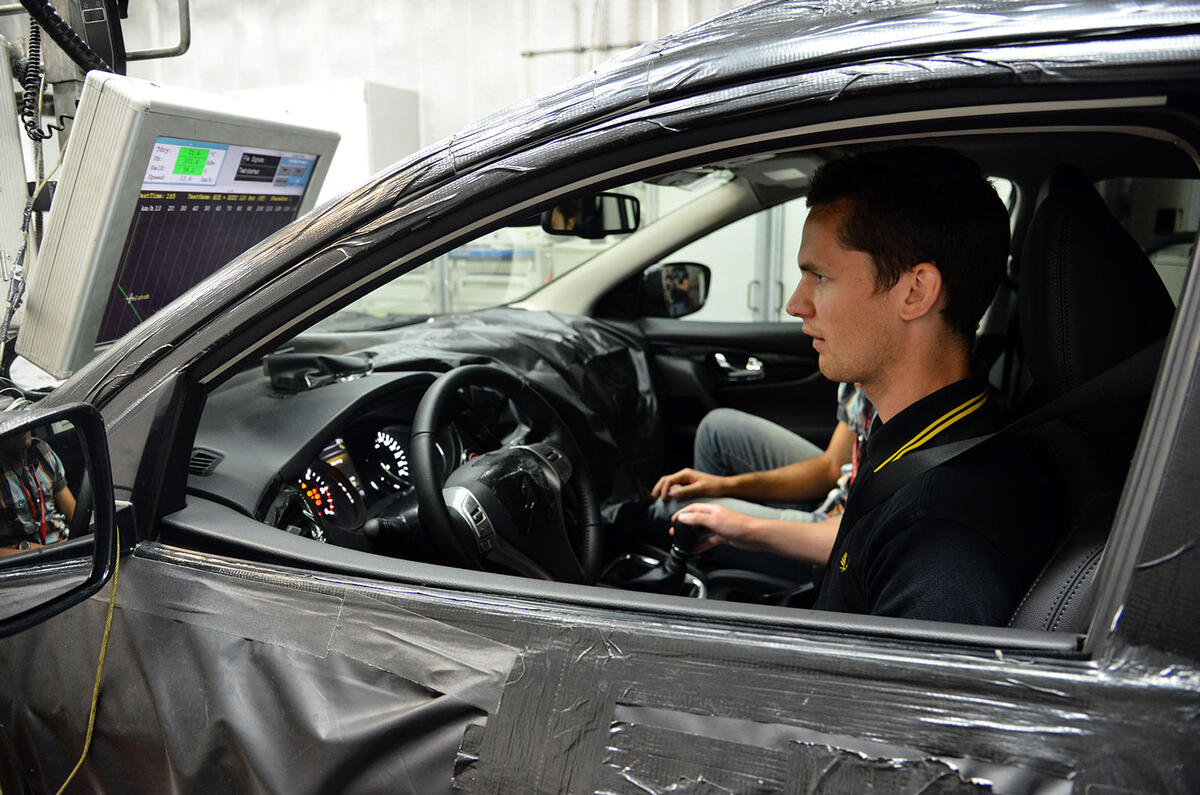There are lots of things wrong with the NEDC, the process via which cars sold in Europe have their emissions and fuel consumption calculated.
The chief grumbles are that the New European Driving Cycle isn’t new, bears no resemblance to European conditions and features no driving. Other than that, it’s spot on.
The NEDC, last revised in 1997, is usually conducted in a laboratory on a rolling road, where it’s most repeatable. Manufacturers can switch off ancillaries and set the ambient temperature, and the whole shebang lasts only 11 (stationary) kilometres – some urban driving and some higher-speed driving, after which you get a combined total.
A manufacturer can conduct the test itself, as many times as it likes before the car goes on sale, until it has a result it’s happy to publish; and although an engineer has to use the pedals to match speeds and acceleration points, it is, according to my colleague Mark Tisshaw, “like playing a really hard game of Space Invaders with your feet”, rather than driving.
The number that comes out of the end is the one that manufacturers quote, and that we quote in our first drives until we’ve had the chance to obtain a more realistic number ourselves.
At the moment, the NEDC has been pulled into the mire alongside Volkswagen, although it shouldn’t really be. Any sensible manufacturer will do its homework to perform as well as it can in what amounts to the NEDC’s classroom examination. VW arrived at said exam having slipped a cheat sheet into its back pocket. As BMW’s R&D boss, Klaus Fröhlich, said last week: “A defeat device is a no-go. That brings you in jail.”
The NEDC’s actual issues, then, are simply that they’re not representative of what you’d see in the ‘real world’. What you get in that laboratory is a figure you’ll never match on the road.
The thing is, if you really try, you will. Our chief sub editor, Tim Dickson, frequently beats a test car’s combined cycle figure but admits sometimes you have to drive “extremely anti-socially” to do it. In the MPG Marathon run by Fleet World Group, they do just that, too, bettering the combined figure by 10-15% on average.
But if you don’t beat it, is it so shocking? “You wouldn’t expect to match a car’s quoted 0-60mph time on the road,” says Dickson, because like the combined figure, it’s set in optimised conditions.
But, yes, the NEDC is outdated and needs replacing. It needs to be longer and more varied so it’s harder to optimise a car for it and, hopefully, it’ll bear more resemblance to actual driving. But car makers will still try to perform as well as they can – and there isn’t a whole lot we can do about that.








Join the debate
Add your comment
Hows this for an article
Real World MPG
Autocar's sister magazine, What Car, does do real-world testing and say that on average get 20% less mpg than officially stated.
But worth remembering too that the VW issue is about emissions, not economy!
More Whatcar...
It's the same thing.
The MPG figure is calculated from the CO2 emissions test so it wouldn't surprise me if CO2 targets and lower tax bands were the main driving force behind these exaggerated MPG figures.
Of course there is, they wouldn't do it if more people disliked it than liked it. Right now it benefits them because of the lower tax and the fact that the motoring press is almost universally happy to quote those figures as reality. With tax changes from governments, like the one the UK has planned, and the non-publication of suspicious figures by the motoring press until they'd been tested and verified we'd soon see it drop back down to accurate levels
There is perhaps a case for publishing 'best case' figures alongside typical ones to encourage people to improve their driving but any sort of government mandated figure that can't be challenged by the customer has to reflect typical use first.
Stats and more stats.
I remember when I was able to beat them too (quite easily with VW's funnily enough), but Tim is more than welcome to drive my 1.6tdi Focus. I very much doubt having four Sumo wrestlers push my car downhill at 56mph with the engine switched off and a tail wind would see Ford's quoted figure of 67mpg on the combined cycle.
Official mpg the old way 1970's the best
Misty eyed 70's
Urban, 56mph and 75mph